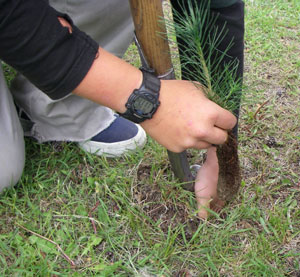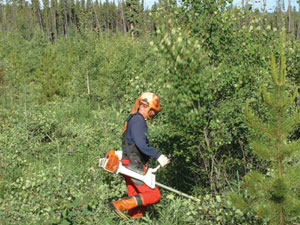Forestry Worker (Silviculture)
Tasks & duties

Silviculture forestry workers may do some or all of the following:
-
receive seedlings from the nursery
-
prepare the ground for seedlings
-
plant seedlings at regular intervals
-
control vegetation around trees using a knapsack sprayer or scrub-cutting machinery
-
select trees for pruning
-
prune trees using loppers (pruning clippers) and saws
-
check the quality of the pruning
-
reduce tree crop numbers by thinning with a chainsaw
-
meet with other workers to discuss issues such as safety, cutting height and what other work needs to be done
-
check equipment for faults
-
supervise a team of workers
Skills & knowledge

Silviculture forestry workers need to have:
-
knowledge of how to handle and plant trees
-
knowledge of safe work practices, including how to safely use a range of equipment such as chainsaws and pruning equipment
-
tree pruning skills
-
knowledge of the chemicals used for spraying
-
first aid skills
Entry requirements
There are no specific requirements to become a silviculture forestry worker as skills are gained on the job.
Secondary education
There are no specific secondary education requirements, but NCEA Level 1 (or equivalent) Maths and English are seen as an advantage by most employers.
Training on the job
Silviculture forestry workers can complete national certificates in forestry establishment and silviculture through FITEC, which involves on-the-job training and practical work assessment.
Useful experience
Useful experience for silviculture forestry workers includes farming or work in a plant nursery.
Related courses
Forestry Studies
Document Actions
